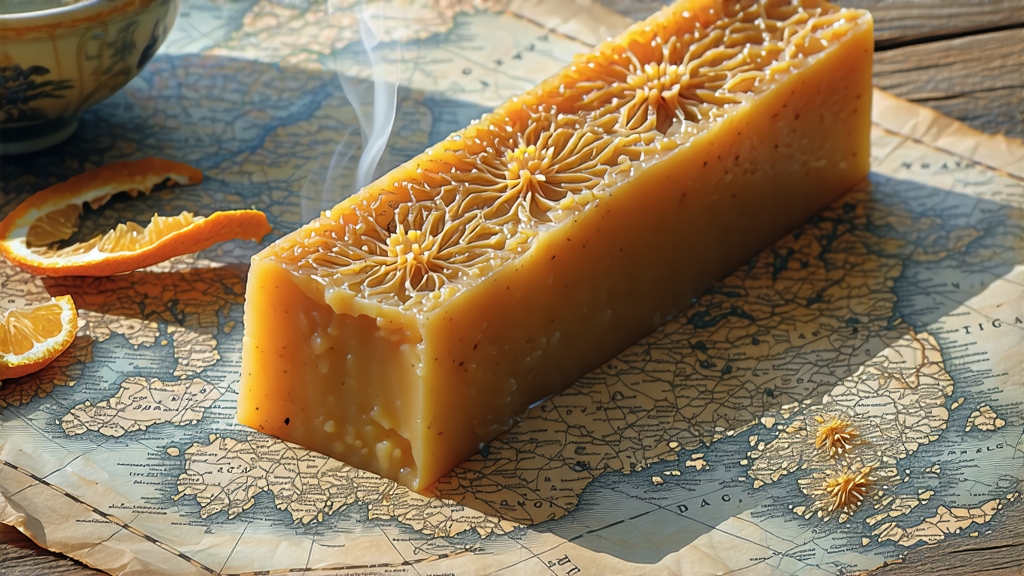
Few beverages can claim to have financed city walls, pacified border tribes, and cured altitude sickness among caravan traders, yet Fu brick tea—compressed, fermented, and flecked with tiny golden fungi—did all three. Known in Chinese as Fú zhuān chá, this dark, mellow tea was born in the humid mountains of Hunan during the Ming dynasty, matured in the windy deserts of Central Asia, and is today celebrated by sommeliers from Chengdu to Copenhagen. To understand Fu brick is to travel the original Belt and Road, one sip at a time.
-
From Tribute to Trade Good
The story begins in 1368, when the Ming court moved the frontier tea-horse market northward. Compressed dark teas from Hunan and Shaanxi were exchanged for Mongolian warhorses; the heavier and denser the brick, the farther it could travel without breaking. Locals noticed that bricks stored in the muggy summer of Anhua County developed brilliant yellow specks—later identified as Eurotium cristatum—and acquired a honey-like sweetness. By the Qing era, imperial edicts fixed the weight of each brick at 2.25 kg, stamped them with the Chinese character “Fu” (meaning “blessing”), and dispatched them westward along the Hexi Corridor. Uyghur, Kyrgyz and Tibetan nomads found that a walnut-sized chip dissolved in yak-butter calmed stomachs, warmed blood, and eased the headache of 4,000-metre passes. Thus a health tonic became a currency; caravans even referred to the bricks as “black silver.” -
Terroir and Leaf Architecture
Authentic Fu brick is still produced only in the 98-km-long Anhua county valley, where the Zi River creates a nightly fog that maintains 85 % relative humidity. The valley’s slate soil is rich in selenium and zinc, elements that migrate into the leaf and later feed the fungus. Only one cultivar is considered worthy: Yun-Tai Da-Ye, a large-leaf landrace that can grow taller than a man and contains 32 % polysaccharides, the perfect substrate for microbial fermentation. In spring, farmers pick one bud with four leaves, slightly later than green-tea plucking, to ensure thicker cell walls that will not collapse during the 29-day piling process. -
Crafting a Living Brick
Production follows a calendar that has changed little in four centuries.
Withering: Fresh leaves are spread on bamboo racks for 4–6 hours, losing 10 % moisture and grassy notes.
Pan-firing: A 280 °C wok kill-green lasts 90 seconds—just long enough to halt oxidation enzymes while preserving spore-friendly surface microflora.
Rolling: The hot leaves are twisted into tight cords, rupturing cells so that amino acids and sugars can migrate to the surface.
Piling: The key step. Seven-ton heaps are covered with wet canvas and left for 29 days. Internal temperature is monitored hourly; when it hits 58 °C workers turn the pile to introduce oxygen, creating alternating aerobic and anaerobic layers. During this time the leaf colour shifts from olive to chocolate, and the first “golden flowers” appear.
Steaming & compression: The fermented maocha is steamed for 90 seconds, then poured into pinewood molds lined with cotton cloth. A hydraulic press exerts 50 tonnes of force for six minutes, yielding a brick so dense it sinks in water.
Fungal inoculation: Bricks are transferred to the “flower room,” kept at 28 °C and 80 % humidity for 12 days. Eurotium cristatum blooms, forming visible yellow granules—each brick hosts roughly 1.5 million per gram.
Drying: Finally, bricks are stacked in a pine-smoke drying tower for 20 days, reducing moisture to 9 % and fixing the floral aroma. The entire cycle, from leaf to market, takes 105 days. -
Anatomy of a Golden Flower
Eurotium cristatum is not a decorative accident; it is a biochemical engine. The fungus secretes extracellular enzymes that clip large catechins into smaller theaflavins and theabrownins, reducing astringency and creating a velvety mouth